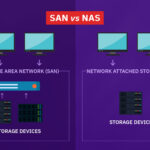Introduction
In today’s rapidly evolving technological landscape, machine learning applications are growing in complexity and scale. These applications rely heavily on vast amounts of data, and the efficiency with which this data is stored and retrieved can make or break a system.
Quad-Level Cell (QLC) NAND flash memory has emerged as a transformative technology, providing a storage solution that meets the high demands of modern machine learning workloads.
By storing four bits of data per cell, QLC NAND surpasses older storage technologies such as SLC, MLC, and TLC, allowing for larger datasets to be housed in smaller physical spaces.
This capability enables organizations to manage data more cost-effectively, without compromising the speed and reliability required by sophisticated machine learning models (Crucial).
Machine learning applications, from natural language processing to image recognition, are increasingly data-hungry. The larger the dataset, the more effective the learning process, but also the greater the strain on storage systems.
Traditional storage technologies often struggle to balance capacity, cost, and speed simultaneously, which is where QLC NAND demonstrates its strengths. By integrating QLC NAND into machine learning infrastructure, organizations can maintain high data availability while keeping costs manageable.
Understanding QLC NAND Technology
QLC NAND is distinguished by its ability to store four bits of information in a single cell, a significant advancement over triple-level cell (TLC) NAND that stores three bits per cell. This increase in storage density allows for larger datasets to be stored on the same hardware footprint, effectively reducing the cost per gigabyte.
Machine learning projects often require terabytes of storage, and QLC NAND provides a practical solution for handling these large volumes of data without creating budgetary pressure.
Additionally, despite the denser storage, QLC NAND maintains high read speeds, which is crucial for machine learning tasks that involve frequent data retrieval (Solidigm).
While QLC NAND is highly advantageous in terms of storage density and cost, it does have some limitations. Its write endurance is lower than SLC and TLC NAND, meaning that write-heavy workloads may reduce the lifespan of the storage device.
However, machine learning applications tend to be read-intensive rather than write-intensive, particularly during model training and inference phases. This characteristic aligns well with QLC NAND’s strengths, making it a suitable candidate for modern AI workflows.
The Impact of QLC NAND on Machine Learning Applications
Machine learning applications thrive on access to vast and diverse datasets. Whether training deep learning models for image recognition, natural language processing, or predictive analytics, the speed at which data can be read into memory significantly affects model performance.
QLC NAND addresses this need by providing high-speed read access alongside large-scale storage, enabling models to process data efficiently. Organizations that adopt QLC NAND for their ML infrastructure often notice shorter training times and improved overall system responsiveness.
The ability to store more data closer to the computing resource reduces bottlenecks, allowing machine learning algorithms to function with higher throughput and greater reliability.
The cost-effectiveness of QLC NAND cannot be understated. Machine learning applications often operate on tight budgets, especially for startups and research teams managing large-scale experiments.
Traditional storage solutions that prioritize speed over capacity tend to be expensive, creating a trade-off between cost and performance. QLC NAND reduces this tension by offering substantial storage at lower costs without severely compromising access speed.
This cost advantage allows teams to scale their storage needs dynamically, accommodating larger datasets as models evolve and expand.
Integrating QLC NAND Into ML Workflows
In practical terms, QLC NAND is often most effective when deployed in read-intensive scenarios. For example, large archived datasets, which may not be updated frequently but require fast access for analysis, are ideal candidates for QLC storage.
By housing these datasets on QLC NAND, organizations ensure that historical data remains accessible for model training or verification, while simultaneously keeping storage budgets under control.
Additionally, hybrid storage architectures can maximize the benefits of QLC NAND. By combining QLC NAND with other NAND types, such as SLC or TLC, it is possible to design a system where the most frequently accessed or write-intensive data resides on faster, more durable media, while the bulk of archival or less active data is stored on QLC.
This strategy optimizes both performance and cost, allowing machine learning applications to maintain high throughput while leveraging QLC NAND for its capacity advantages.
Data management techniques further enhance the usability of QLC NAND in machine learning. Compression algorithms, for example, reduce the volume of data written to QLC cells, thereby extending device lifespan and improving storage efficiency.
Error correction protocols are equally important, as the density of QLC cells makes them more susceptible to data errors. Implementing robust error correction ensures data integrity, a critical consideration for machine learning applications where corrupted datasets can lead to flawed model outcomes (CyberRaiden).
Addressing Challenges of QLC NAND
Despite its advantages, QLC NAND is not without challenges. Its lower write endurance requires careful consideration when integrating it into environments with high write activity. Strategies like wear leveling, where write operations are distributed evenly across storage cells, help mitigate the risk of premature wear.
Similarly, over-provisioning reserving extra storage capacity can extend device life by providing spare cells to replace worn ones. These techniques, combined with careful workload planning, allow machine learning teams to exploit QLC NAND effectively without encountering frequent storage failures.
Data integrity is another consideration. The increased number of bits per cell in QLC NAND can raise the probability of read errors, particularly over extended periods of use.
Employing advanced error correction algorithms mitigates these risks, ensuring that machine learning datasets remain accurate and reliable.
Maintaining data integrity is especially important for models used in high-stakes scenarios, such as healthcare diagnostics or autonomous driving, where incorrect data could lead to costly or dangerous outcomes.
Real-World Applications
QLC NAND has already begun transforming real-world machine learning deployments. In AI-driven research, the ability to store and access massive datasets efficiently enables scientists to train larger models, experiment with more complex architectures, and iterate faster.
Similarly, in enterprise environments, QLC NAND allows companies to store historical transaction data or user activity logs for predictive analytics, improving decision-making processes without incurring the costs associated with more expensive storage media.
Even consumer-focused applications benefit from QLC NAND. Devices that perform on-device AI computations, such as smartphones or personal assistants, can leverage dense QLC storage to handle growing datasets locally, reducing reliance on cloud storage and minimizing latency.
The combination of high capacity and efficient read performance ensures that these applications remain responsive while managing increasing data volumes.
The Future of QLC NAND in Machine Learning
Looking ahead, QLC NAND technology is poised to become even more integral to machine learning infrastructure. As AI applications continue to expand in scope and complexity, the demand for cost-effective, high-capacity storage solutions will only increase.
Future iterations of QLC NAND are expected to improve both endurance and speed, further bridging the gap between performance and affordability.
This evolution will allow machine learning systems to handle increasingly large datasets with greater efficiency, enabling innovations in fields ranging from autonomous systems to personalized healthcare.
Organizations that invest in QLC NAND today are positioning themselves for long-term success. By understanding the strengths and limitations of this technology and integrating it thoughtfully into storage architectures, machine learning practitioners can maximize the efficiency and scalability of their systems.
The ability to store more data while controlling costs and maintaining high performance offers a competitive advantage that is difficult to replicate with older storage technologies.
Practical Tips for Maximizing QLC NAND Benefits
When implementing QLC NAND, it is important to adopt strategies that align with the technology’s strengths. Prioritizing read-heavy workloads allows teams to capitalize on high read performance while minimizing wear.
Hybrid storage solutions, combining QLC with more durable NAND types, provide flexibility in handling both active and archival data. Compression and error correction further enhance the value of QLC NAND, extending its lifespan and ensuring the reliability of stored data.
By considering these best practices, organizations can optimize their machine learning pipelines, improving both efficiency and cost-effectiveness.
QLC NAND
QLC NAND represents a significant advancement in storage technology, particularly for machine learning applications. Its combination of high capacity, cost-efficiency, and strong read performance addresses many of the challenges associated with managing large datasets.
By integrating QLC NAND into machine learning workflows, organizations can reduce storage costs, accelerate data retrieval, and scale their operations to meet the growing demands of AI and data-driven technologies. While challenges such as lower write endurance and potential data integrity concerns exist, they can be mitigated through careful system design, hybrid storage architectures, and robust data management practices.
As machine learning continues to advance, the role of storage technology will become increasingly critical. QLC NAND offers a practical, forward-looking solution that enables researchers, developers, and enterprises to work with larger datasets, train more sophisticated models, and unlock new insights from data.
Embracing QLC NAND today ensures that machine learning applications are not only efficient but also scalable, cost-effective, and ready to meet the challenges of tomorrow.
Sources
Crucial: How QLC NAND Streamlines Machine Learning Applications
Solidigm: QLC NAND Technology Is Ready for Mainstream Use in Data Center
TechTarget: What is Quad-Level Cell NAND (QLC NAND)?
Integral Memory: QLC NAND Flash | Pros and Cons
SK hynix Announces Mass Production of Its 2Tb 3D QLC NAND









We need more information about QLC
thank you